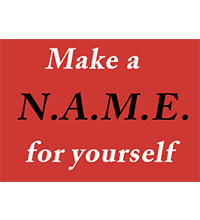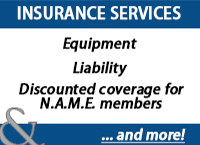
By Ben Stowe, CTS - “Sound & Lighting Guru”
One of the truly great things about our industry is that there is a lot of room for artistic expression. There are some clearly defined do’s and don’ts when it comes to some things (wiring, rigging, laser safety, etc) but there are many more areas that operate in a great big gray area. Basically, when it comes to choosing lighting fixtures and their use at your events, that all lives in this area of great subjectivity. If you’re a person that was hoping this article would give you a bulleted punch-list of things to go buy, stop reading now. If you’re a person who enjoys individuality and wants to create a unique atmosphere for your clients but needs some basic guidance, you’re in the right spot.
The Purpose of Lighting
What do you need in order to provide lighting at your events. Well, it depends. Let’s dive right into the gray area. First, we should take note of why we would have lighting at all. Afterall, people likely go to our events to enjoy the company of their friends and relatives while jamming to our rockin’ tunes. Neither of which requires lighting from us. Most humans have 5 primary senses, and those of us fortunate enough to have sight and to be able to see most hues and colors give strong preferential treatment to the information our eyes give us (even if it’s wrong, maybe more on that later). Our brain takes a lot of shortcuts to make sense of all the information presented to it about the world around it. It develops associations between senses, and uses this information in an aggregated sense.
In simpler terms, think about it this way. If you took a room full of people and put them in a room brightly lit with overhead fluorescent lights and started cranking tunes, would many dance? Some DJs would argue that people would dance to their tunes even if they had 2 broken legs, but for the majority of people, that environment would put them in an alert and guarded state where social inhibitions would prevent them from getting their boogie on. Dim down the lights a bit, and it’s party time. We see similar effects with most other aspects of entertainment. Concert tour and theater particularly. If a person buys a ticket simply to hear a performer sing, why have lights? Why spend so many resources on designing, transporting, erecting, programming and operating elaborate lighting rigs for these shows? The same with theater. If actors and actresses are the performance, why have set pieces and lighting? It’s a package deal, that’s why. Just as theater lighting helps set a “mood,” so too does it in the mobile entertainment world. The lighting you use, it’s positioning and color will effect the psychological and physiological responses of your guests.
Lights You’ll Need
Now let’s get down to the brass tacks. What do you need? I find lighting a room to be a bit like painting a canvas. The paints and brushes I use will depend on the picture I am going to paint.
First, I almost always propose starting off with some wash lighting fixtures. These fixtures cover a large area and create the base layers of an effect. Typically, I use these as broad brush, slow moving (or stationary) elements. They help me set the tone for a room, while also providing adequate lighting for people to go about doing the things they want to do, safely. Wash lights come in a variety of forms, and for DJs we typically use them in the form of pars and battens (strips). With the compact size, intensity, low power draw and color-mixing capabilities of LED fixtures I find these to be excellent choices.
Secondly, I want to create some definition in my design. Put in some contrast and maybe some “edges.” This can be done with focused light. Maybe things like moving heads or ellipsoidals and some abstract gobos. These help create some depth and texture. A friend of mine that designs lighting for a major touring act had perhaps one of the best pieces of advice for this type of effect. He said, “Just because it is a moving light, doesn’t mean it has to move”.
In other words, take advantage of the diverse feature set your moving lights offer, but don’t necessarily feel like they need to always be moving around.
Then, I find it important to create punctuation in the design. Identify and highlight focal points. Not only can these change throughout the event, but I feel they SHOULD change throughout the event. In the instance of a wedding, the focal points might be the entrance, a toast, the first dance, the cake and more. Just as we have a variety of punctuation marks in grammar, we do in lighting as well. The cake might be punctuated with a period, or simply a softer spotlight, where the entrance might be punctuated with brighter, sharper lighting. We’re getting into that very subjective design area, but the lighting should fit with what else is going on at the time.
Moving lights, followspots, ellipsoidals and pin spots are my go-to effects for things like this, but they often have a supporting cast of things like atmospherics (fog machines), confetti & streamer cannons, and other effects that might be employed. To that end, some of the same fixtures we used as “wash” effects could be essential to creating punctuation as well. LED pars or strips might light an entrance way with bright, moving colors while a followspot brings the bridal party off that colorful background (if that fits what the client is doing).
Deploy Your Fixtures
To deploy these fixtures we may need trussing, t-bars, rigging points, bases, clamps, airwall hangers, or some combination of the above. What we’ll use and how we’ll use it obviously is very dependent on the application. One thing is for certain though, safety must be your primary concern. Cables should be neatly run and properly secured (gaff tape is excellent for this) to prevent fall hazards. Anything overhead must be properly secured by qualified people and that equipment should be inspected regularly (this includes t-bars and trusses that are ground supported).
Lastly, to control these elements and to make your painting a living creation that flows with the event, nothing beats the industry standard designed for the purpose. Get a DMX controller (I strongly recommend software for it’s ease of use, power and flexibility). Then connect your equipment with a robust wireless solution and/or quality DMX cables. This ensures that your design will do what it’s supposed to do, when it’s supposed to do it.
Enjoy your new found capabilities to express emotive influence over your events! It is the emotion people experience at your events that will increase their demand for you as an entertainer.





